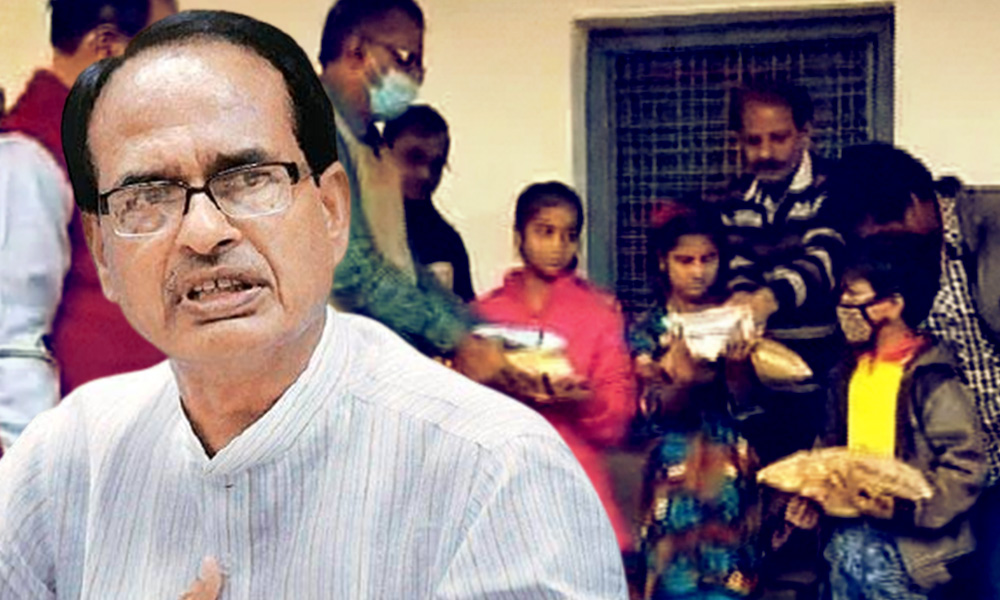
Image Credits: The Indian Express, NDTV
'Madhya Pradesh Govt Take-Home-Ration Scheme Only On Paper,' Child Rights Panel Detects Irregularities Over ₹4.26 Cr
Writer: Palak Agrawal
Palak a journalism graduate believes in simplifying the complicated and writing about the extraordinary lives of ordinary people. She calls herself a " hodophile" or in layman words- a person who loves to travel.
Madhya Pradesh, 6 Feb 2021 3:59 AM GMT
Editor : Shweta Kothari |
A broadcast turned digital journalist, Shweta Kothari heads the newsroom at The Logical Indian. She has previously worked with CNBC and NewsX as a news anchor and senior correspondent. Shweta holds a masters degree in journalism from the university of Sussex, UK and started her career with work placement with BBC in Scotland.
Creatives : Rajath
A free spirit who find meaning in life with the virtue of creativity and doing job par its excellence, animal lover and traveller by heart.
The apex body working towards protecting child rights has raised a red flag on the discrepancy in 'Take Home Ration' scheme for adolescent girls who had dropped out of school.
National Commission for Protection of Child Rights (NCPCR), the apex body that works towards protecting and defending the child rights in the country, has raised a flag against discrepancy in the Madhya Pradesh government's 'Take Home Ration' scheme for adolescent girls who have dropped out of school.
It stated that the scheme is operational only on paper and has asked the state government to investigate the matter.
Discrepancy in Meal Scheme
The NCPCR, in a letter, has asked the director-general of the state's Economic Offence Wing to register a case after financial irregularities worth over ₹4.26 crore in the take-home ration scheme was detected in four districts of the state. It has been asked to take appropriate action and submit a report on action taken to the commission within 10 days.
Several media reports stated that the letter which was signed by the commission's registrar summarised findings of the enquiry reporting irregularities from four districts —Betul (₹117.25 lakh), Gwalior (₹128.54 lakh), Dindori (₹51.04 lakh) and Singrauli ( ₹130.02 lakh).
The detection of this irregularity comes after the NCPCR chairperson Priyank Kanoongo conducted a surprise inspection of the quality of food items served in the Anganwadi centres in several districts of the state in 2019.
Kanoongo found that there were a large number of adolescent girls in the age group of 11-14 years, the actual beneficiaries, who were not getting the ration. She sought information on the out-of-school adolescent girls from the state's department of women and child development.
State's women and child development, then, furnished data which showed that there were 2,17,211 adolescent girls (aged 11-14) out of which 1,71,365 girls were allocated take-home ration in 2019.
But the commission went a step further and cross-checked the numbers with the state's department of school education. It was revealed that there were 23,491 out-of-school children in the age group of 11-14 years, of which only 8,680 were adolescent girls.
For instance, in Singrauli district, the number of out-of-school girls as per the data by the women and child department in 2018-19 was 53,554. However, the figure provided by the state's education department was zero, NDTV reported.
"This is just a tip of the iceberg. This scam is at least of more than ₹100 crores," Kanoongo told Hindustan Times.
"I made a surprise visit to an aganwadi centre in Vidisha district in March 2019 and found a list of girls, who were getting THR. As I used to know some of the girls, I called their family members and asked them to enrol the girls back in the schools. I came to know that these girls were not getting THR and were attending schools. In the name of these girls, THR is being consumed by someone else,' Kanoongo said.
She further stated that the women and child development department failed to provide the names of the girls who were beneficiaries under the scheme hinting at factual irregularities.
"NCPCR sought the same data from school education department to know the number of drop out girls aged 11 to 14 years. The school education provided data that there were 8,600 girls, who left the school. As there were huge differences in the data, I wrote to Comptroller Auditor General (CAG) to probe the data. The CAG report of four districts- Betul, Gwalior, Dindori and Singrauli revealed financial irregularities of ₹4 crores in the THR programme in one year," Kanoongo said.
"I've not seen the case, can respond only after seeing the documents," the director of women and child development, Swati Meena Naik told The New Indian Express.
"Whosoever will be found guilty will be punished, but this is the result of rampant corruption during Congress regime. We are investigating the entire matter. Senior Congress leader and former cabinet minister Jitu Patwari said 'on one hand they do kanya poojan before any function, on the other hand they don't even spare the take-home ration of poor girls. I believe Shivraj Singh had failed," Madhya Pradesh Medical Education Minister Vishwas Sarang said while passing the buck for the discrepancies to the previous regime.
What is the scheme?
The scheme — covering the out of school adolescent girls in the age group of 11 to 14 years has two components— nutrition and non-nutrition.
The take-home ration or cooked meal is provided to all such girls with a nutrition provision of ₹ 9.50 per day ( which includes 600 calories; 18‐20 gram of protein and recommended daily intake of micronutrients per day for 300 days in a year.).
The scheme was approved in the year 2010 and was implemented in 205 districts across the country. According to Vikaspedia, the scheme was eventually expanded and implemented in additional 303 districts in 2017-18 and the remaining districts in 2018-19 with the simultaneous phasing out of Kishori Shakti Yojana (KSY).
Also Read: Delhi: Over 166000 Students Untraceable As Schools Moved Online During Pandemic
 All section
All section














